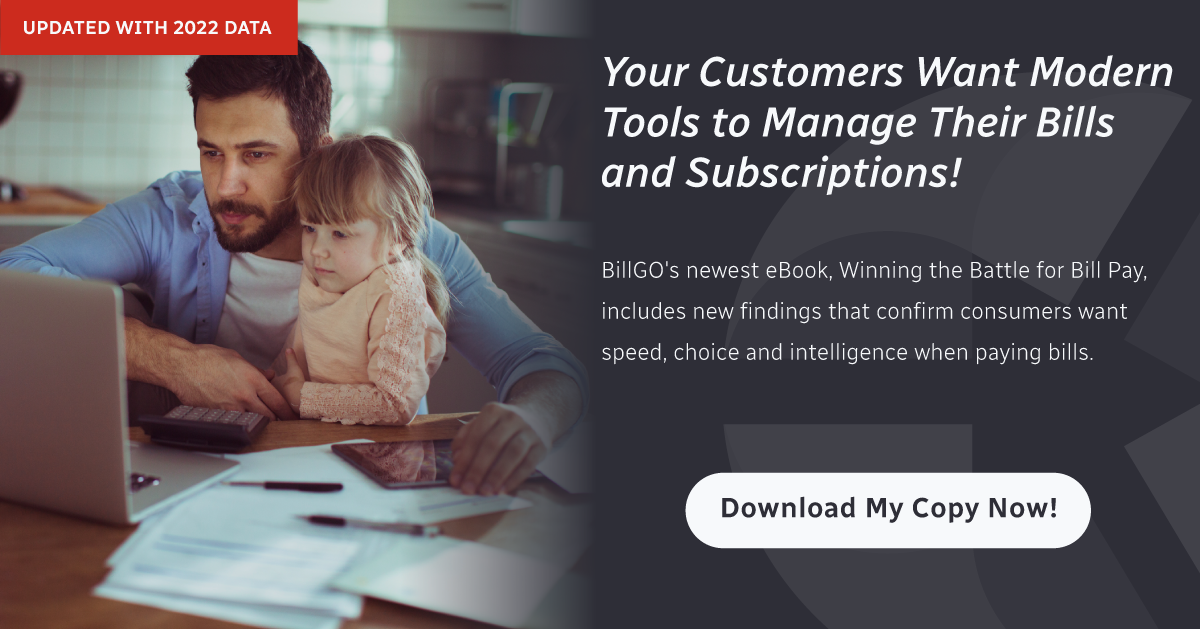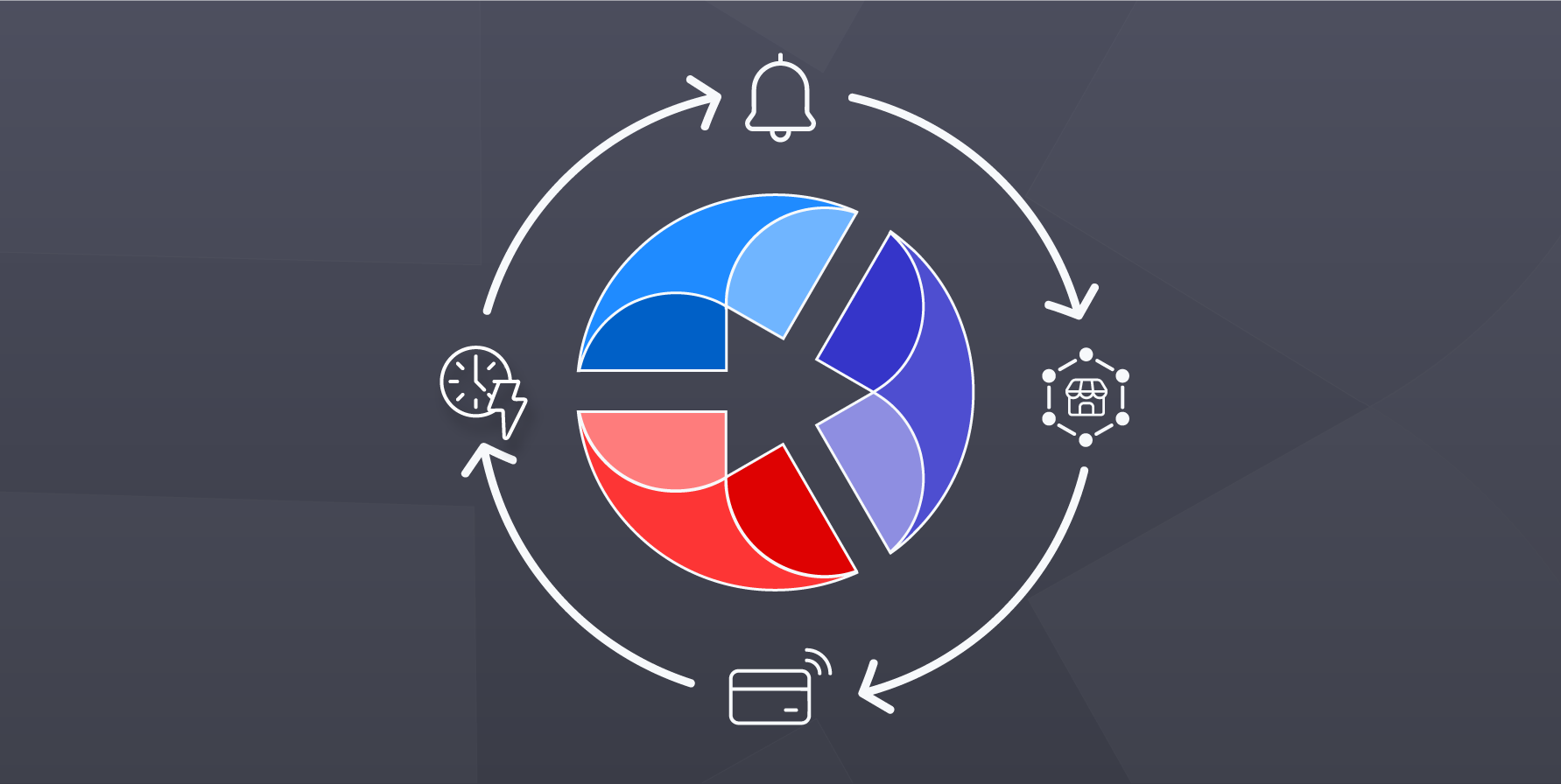To say consumers have “embraced” modern digital payment platforms is an understatement; it’s been more like a WWF-style bear hug.
And yet, many consumers continue to rely on the decades-old legacy bill pay technology their financial institutions (FIs) offer (even though 52 percent of them say the bill pay service their banks offer miss the mark).
This disconnect explains why more and more consumers are ditching their FI bill pay services each year and opting instead to pay their bills directly to their billers.
“We’ve gone from a majority of Americans managing their bills through bank bill pay to only about 40 percent by 2010. And [as of 2021], we’re seeing 20 or 25 percent at best with about three-quarters of Americans opting to pay their online bills directly to their billers,” Dan Holt, BillGO Co-founder and CEO, told PYMNTS last year.
This means consumers are now, on average, logging into at least 12 different sites each month just to keep up with their bills. Not only does this practice put them at risk by sharing their login credentials a dozen times a months, it also increases the chance of late payments – something 48 percent of consumers say they are “very” or “extremely” stressed about.
Why are the bill pay services delivered by banks falling short of consumer expectations? The answer lies in the outdated, legacy technology that most FIs offer their customers. As Holt reminded PYMNTS, the typical bill pay service offered by an FI hasn’t evolved since the iPhone was released in 2007. In that same amount of time, “the world has changed, consumer expectations have changed, but bank bill pay hasn’t changed,” he said.
While consumers have streamlined digital experiences in all other areas of life, bank bill pay is still stuck on the first rendition of “online banking.”
BillGO's research overwhelmingly shows consumers expect speed, choice, and intelligence when it comes to managing their bills. They want full visibility surrounding their financial commitments and the ability to pay how and when they want. Those banks that fail to deliver run the risk of losing customers to another institution that will.
Here are four benefits modernize bill payment provides to your customers:
Easy, Centralized Biller Set-up
Currently, consumers pay most of their bills directly to billers through their websites. Despite having to remember and manage 12 logins per month, consumers do this because it gives them control over how and when bills get paid.
It’s not like consumers prefer managing multiple passwords. They would rather have one user-friendly interface where they can quickly link to their billers using a single set of credentials.
“Friction within the biller-direct model includes remembering unique login credentials for each biller or opening up potential security issues as a result of entering bank account numbers or card details on multiple sites,” said David Albertazzi, co-author of How Americans Pay Their Bills, a comprehensive, national study BillGO commissioned in 2020 from Aite.
How your customers benefit: Modern bill pay technology does the heavy lifting for consumers by providing them with a single interface that is easy to set up and capable of managing all their bill payment information. This streamlined user experience empowers consumers to have complete control over their bills and subscriptions and choose how and when they want to pay.
Secure Payments Using a Virtual Card
Most consumers want secure environments and transactions when paying their bills which happens when they can pay with a virtual card. A virtual card works like a physical card but offers more security features.
Virtual cards eliminate the need to share customer's information with the biller, protecting those credentials in the case of a data breach or other security threat. Virtual cards are a simple, convenient, and more secure way to make payments.
How your customers benefit: When using a virtual card, no personal banking information is shared with the biller, helping to safeguard their personal information.

Instantaneous Payments and Confirmations
The demand for real-time payments (RTP) is growing and analysts expect it to hit $16 billion this year and — according to one international market research firm — will surpass $277 billion by 2032. And that’s just the beginning: as On the GO reported in March, 85 percent of business leaders say RTP capabilities are among the top considerations they look for when selecting FIs to do business with.
Offering real-time payments allows consumers to pay even more of their bills in a consolidated experience and receive immediate confirmation of the payment – experiences which give them more control over their finances. Real-time payments remove friction in paying bills and allows consumers, merchants and FIs to pay friends, customers and settle bills almost instantly.
“When you consider consumer anxieties around credit scores and late fees, it’s clear that offering real-time payment tools is imperative if FIs hope to pull ahead of direct billers in meeting consumer needs,” said Dan Holt, BillGO CEO.
The biggest players in the RTPs market are The Clearing House and the Federal Reserve’s soon-to-be-launched FedNow℠ Service which BillGO is joining in 2023.
How your customers benefit: Instantaneous payments take the friction out of waiting for a payment to finalize by quickly completing the transaction. This gives consumers the speed and convenience they want.
Instant Notifications and Reminders
Each year, Americans are nickeled and dimed by a barrage of financial services fees charged for overdrafts, return processing, money transfers, inactive accounts, late payments and more.
According to the CFPB, these fees are: “draining tens of billions of dollars per year from Americans’ budgets.”
Given the amount of excessive penalties Americans are incurring it is increasingly likely that some bills may be paid late or not paid entirely which impacts consumers credit scores. Modern bill pay with bill payment notifications and reminders are two more ways consumers can avoid these many fees.
How your customers benefit: Prompt notifications and reminders about upcoming payments and account activity helps consumers stay on top of their financial obligations by removing the need for manual tracking. While no feature can completely eliminate costly banking fees being paid, it does provide a way for consumers to stay up-to-date and aware of their finances all in one place.
Want to Know More?
Whether you are an executive overseeing an established financial institution or running a fast-paced fintech, it is critical you keep a pulse on what your customers want.
BillGO’s latest eBook, Winning the Battle for Bill Pay, delivers a dozen pages of research from Aite Group, PYMNTS, Mercator and others detailing what consumers want and need in bill pay technology.
Download your complimentary copy today.


